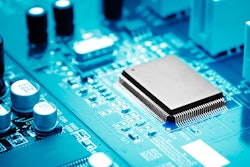Ford’s Autonomous Delivery Drones
At the 2017 Mobile World Congress in Barcelona, Ford unveiled a concept geared toward solving the last mile challenge for delivery—particularly the final 15 meters. Named “Autolivery”, the concept features an electric self-driving delivery van with the ability to launch a fleet of drones that can pick up and drop off packages in hard-to-reach places.
Ford envisions the vans quickly and efficiently transporting everything from groceries to medical supplies on the ground, with drones taking to the air for the final leg of the journey. The drones could also reach destinations inaccessible by car, such as high up in a tall building or where parking is difficult, impractical or unsafe.
According to one of the designers on the project, it’s all about making life in the city easier in an increasingly urban world.
Ford continues to look more like a technology company than a conventional automaker. It intends to have a fully autonomous, SAE level 4-capable vehicle for commercial application in mobility services such as ride sharing, ride hailing or package delivery fleets in 2021. It also expects continued growth in electrified vehicles, to the point where they outnumber their petrol‑powered counterparts in the next 15 years. Ford feels that shared modes of transportation will continue to gain popularity and connected communications between vehicles and infrastructure will grow.
SO, WHAT DO YOU THINK?
Do you see this concept as a solution to deliveries? How do you think this concept could change the way warehouses and manufacturers work? Tell us what you think by leaving your comments below.
Crop Phenotyping Robot
Phenotyping — the process of observing a plant’s physical characteristics and assessing its health — is a time consuming task, especially when there is a whole field of crops to examine. That’s where a little robotic assistance could come in handy.
A team of scientists at the University of Illinois are developing a semiautonomous agricultural robot to gather and transmit real-time data on the growth of crops. Inspired by the autonomous rovers used to search collapsed buildings, this agricultural robot uses miniature tank treads to navigate through dry and muddy fields. The robot is guided through a combination of GPS and a human-operated laptop.
As the robot travels between the rows, it uses hyperspectral, high-definition and thermal cameras, weather monitors and pulsed laser scanners to capture phenotypic information — such as stem diameter, height and leaf area. It also assesses environmental conditions, such as the temperature and moisture of the soil.
The gathered information can be used to make 3D computer models of the plants, predict future growth and development patterns and estimate the biomass yield of the plant and the crop as a whole. Researchers say the robot could help speed up the rate of improving genetic material.
Currently, the agricultural robot has only been tested on energy sorghum. However, researchers say the device should work just as well with similar tall-growing plants such as wheat and corn.
SO, WHAT DO YOU THINK?
How do you see this type of technology being applied outside of agriculture? Let us know what you think in the comments below.






















